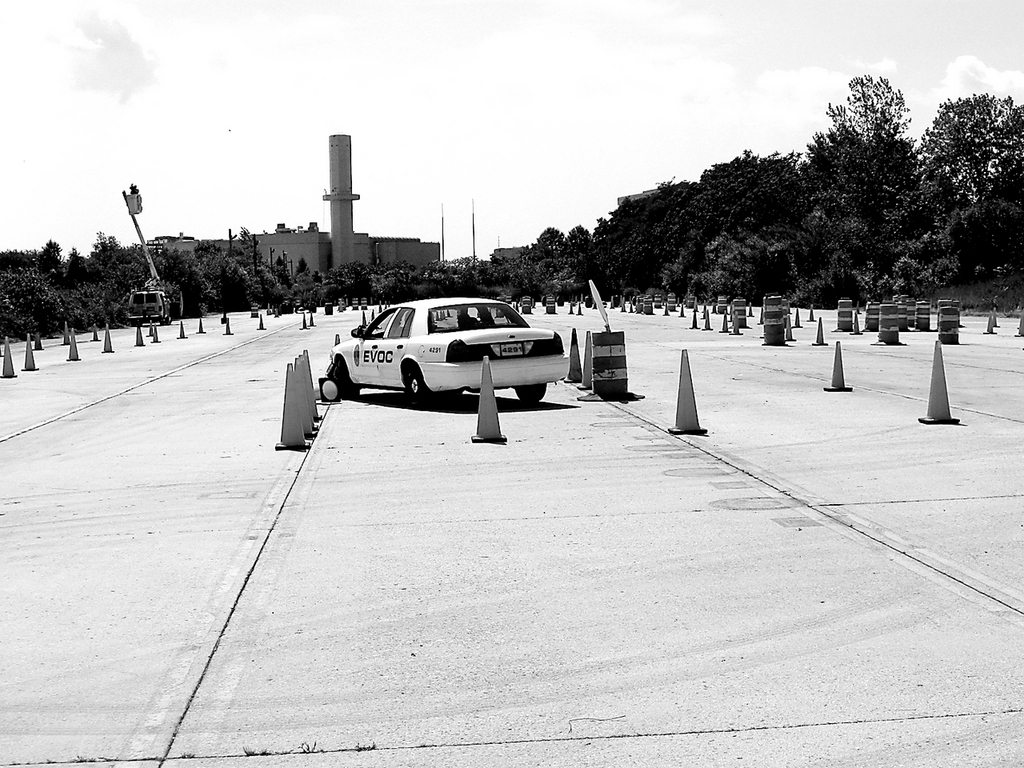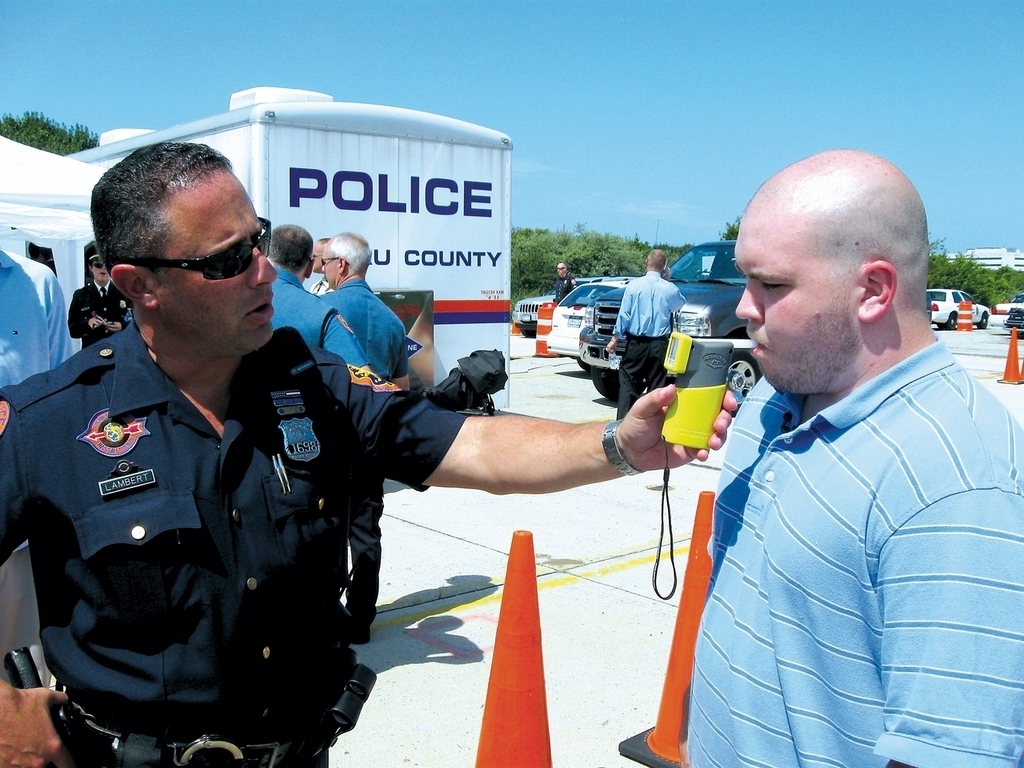Drunk drivers feel the heat across county
Volunteers show the dangers of intoxication behind the wheel
As the summer comes to a close, and neighbors spend a few extra hours savoring the warm weather and barbecues, the temptation to have a few drinks with friends can be powerful — but as Nassau County police and a few volunteers helped demonstrate last week, even a little alcohol can make a big difference on the roads.
Nassau County officials, in conjunction with the NCPD, took to a Nassau County obstacle course recently with volunteers from some local communities to show just how badly drivers perform when they have alcohol in their system.
Co-hosted by District Attorney Kathleen Rice and Gov. David Paterson’s traffic safety commission, the event highlighted just how efficient police are at identifying alcohol-impaired drivers, and just how poorly those drivers fare on the road.
“With summer coming to an end looking forward to Labor Day festivities,” Rice said, “it is now more than ever so critical that everyone understand that drunk driving can land you in jail at best, and ruin lives, and destroy families at worst.”
The event also served as fair warning to residents of Nassau County that police enforcement would be stepped up on the county’s streets during the two weeks around Labor Day.
“Enforcement is going to be stepped up, patrols are going to be increased, and enforcement checkpoints will be everywhere throughout the county,” Rice added. “There is no fooling a Nassau County police officer when you are driving drunk.”
According to statistics from the Nassau County Traffic Safety Board, there were 4,269 DWI arrests in Nassau County last year. Of 615 alcohol-related crashes in 2008, 19 ended with a fatality.
Five volunteers started drinking 80-proof alcohol at 10:15 a.m. on Wednesday morning, according to police manning the bar. The volunteers made themselves available as guinea pigs — pickled ones at that — to show just how easy it was for officers to spot someone who’d been drinking.
Liz Auger, an employee in the County Clerk’s Office, was the day’s first driving and sobriety test volunteer. She had just 10 ounces of alcohol in two hours and registered on a breathalyzer at .15, almost twice the legal limit of .08.
“I was very surprised at how little alcohol it took me to get as drunk as I am,” Auger said, standing underneath a shade on the obstacle course. “I thought I would be able to drink way more.”
Auger and four other volunteers showed up at a police obstacle course in Garden City at 9 a.m. on Wednesday to take field and driving tests totally sober, and all of them, according to officers, performed well.
Auger demonstrated for reporters and onlookers just how difficult it is to perform well on a field sobriety test with 10 ounces of alcohol in your system.
When asked by an officer to stand on one leg and count to 30, Auger could barely get into the teens before tipping one way, then the other. On the same test while sober, Auger made it to the high 20’s before she even started to falter.
Mike Lee, 24, had six mixed drinks and blew a .11 on the breathalyzer.
“I’m definitely drunk,” Lee said. “During the vision test I felt my eyes twitching.”
Based on his performance during the sober tests, Lee thought he would have a difficult time on the obstacle course behind the wheel.
Once the rubber hit the road, he did even worse than he thought.
Lee touched a few cones during the slalom portion of the course, then proceeded to plow into several cones during the stop-and-start portion. He also braked erratically and abruptly.
“It definitely seemed different [when I was drunk],” Lee said. “Things came up a lot quicker. Everything felt a lot closer to the car. I also hit a couple of cones, so that’s not good.”
Auger said she felt terrible — and worried — after her performance on the course under the influence. “I didn’t listen to instruction, I just wasn’t listening,” she said. “I was thinking that I would be driving really slow if I was actually on the road.”
Every driver had a difficult time with both field sobriety tests and the obstacle course, and police felt vindicated at the end of demonstrations.
Ultimately, officials said, the best way to stop drunk driving accidents is to keep people from ever getting behind the wheel.
“Do the smart thing, designate a driver, make travel arrangements, hail a cab,” Rice said. “Do not roll the dice with your life and the lives of fellow motorists and pedestrians by getting behind the wheel after you have been drinking. It is that simple.”









